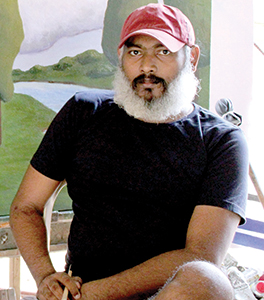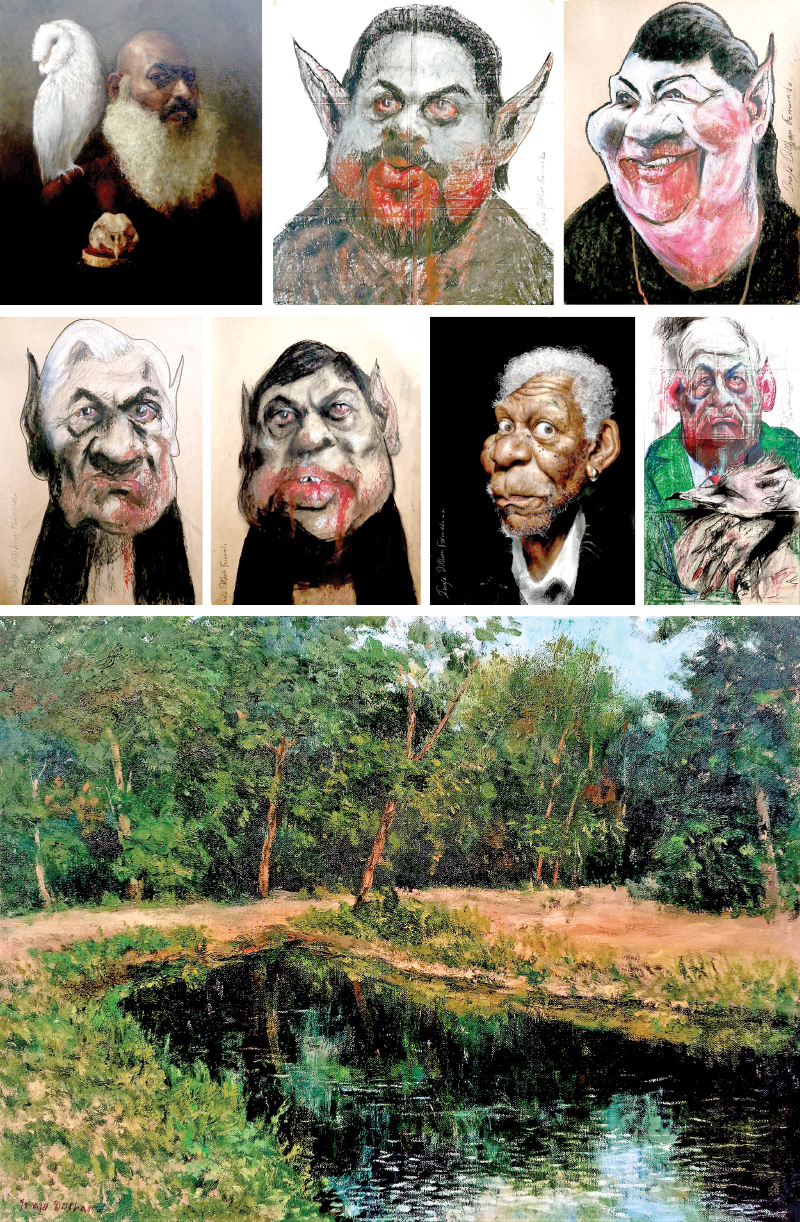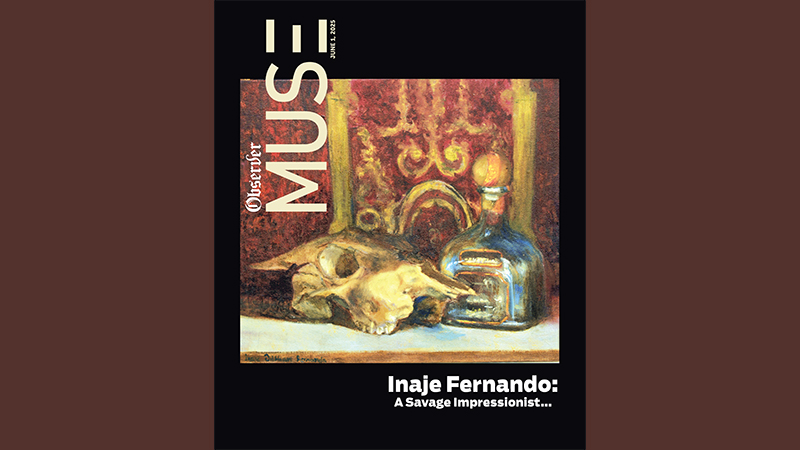 During the 2022 Aragalaya, many artists came forward to express their protest through art. One of the most eye-catching works was a three-panel caricature by artist Inaje Dilshan Fernando.
During the 2022 Aragalaya, many artists came forward to express their protest through art. One of the most eye-catching works was a three-panel caricature by artist Inaje Dilshan Fernando.
Wrapped in darkness and bloody fangs, Fernando put public anger into canvas by depicting political leadership as hungry vampires. MUSE reached out to the impressionist to ask where the darkness comes from.
Q: It’s been three years since your famous Aragalaya caricatures. Do you still draw them?
A: I still do. It doesn’t stop. Until Sri Lanka is truly developed, we have to keep struggling — aragala is ongoing.
Q: Where did you learn art?
 A: I joined the Vibhavi Academy of Fine Arts in 2004. I’d been drawing since I was a child, but Vibhavi was where I began studying seriously. I couldn’t enter a university because I lacked the academic qualifications, so Vibhavi laid the foundation for me to become a professional artist.
A: I joined the Vibhavi Academy of Fine Arts in 2004. I’d been drawing since I was a child, but Vibhavi was where I began studying seriously. I couldn’t enter a university because I lacked the academic qualifications, so Vibhavi laid the foundation for me to become a professional artist.
Q: As an impressionist, your command of colour is striking. Who are your main influences?
A: My teacher at Vibhavi, Chandragupta Thenuwara, was a huge influence. He studied the Russian Masters, so naturally, I absorbed that tradition. We read Russian texts on art, and you can see the sway of Russian Impressionism — and to some extent, French Impressionism — in my landscapes, still lifes, and portraits. But instead of soft dabs of colour, I try to evoke strong emotions through my brushwork.
Q: Your caricatures contrast sharply with your main body of work. People also notice that your landscapes never feature humans or animals. Why?
A: I walk a lot before I paint landscapes. And every time, I see how scenic places are polluted by human presence. I did try including human figures, but out of my devotion to the environment, I removed them. To me, a human in a landscape is pollution — (laughs).
Animals are different. They belong to the natural world — as do we — but our behaviour is contradictory. When you see footprints on a beach, you know an animal passed through. When you see beer cans and shopping bags, you know a human did. So I depict nature as it should be: untouched.
Q: Liminal space art and melancholic photography are popular online. Your empty spaces and moody tones feel similar. Thoughts?
A: That melancholy reflects our so-called “development.” We see new buildings and cars and think we’ve progressed. Medical science is advanced, but it only treats — it doesn’t prevent. Covid-19 exposed that.
Yes, we claim progress, but what do we really have? Another war between India and Pakistan? These feelings — disillusionment, silence — they seep into my art. I love silence, and maybe that’s why it shows up in my work.
Q: Your caricatures are grotesque, almost beastly — like Francisco Goya. Your still lifes, too, are steeped in shadow. Where does that darkness come from?
A: That doesn’t come from Russian Impressionism — they’re all about colour and light. The darkness comes from my early love for the Baroque — Rembrandt, Caravaggio. I studied Rembrandt’s use of diagonal shadows, and that even influenced photography. That chiaroscuro speaks to me.
My caricatures, though, are a different story. I have three styles. The political ones are directly influenced by Goya and Frank Hoffman. In a country like ours, politicians really are beastly.
I’m 43, and I feel we’ve been suffering our whole lives. We’ve been “developing” for generations — from our fathers to our children.
So the grotesque side of politics comes through naturally. We call politicians animals — that’s not by accident. It feels like Kuveni’s Curse [laughs]. There’s no dawn in this nation. We vote for different parties every five years — even gave power to the “rebels.” Still, nothing changes.
Some people resist any kind of change. As an artist, I channel those frustrations onto the canvas.










